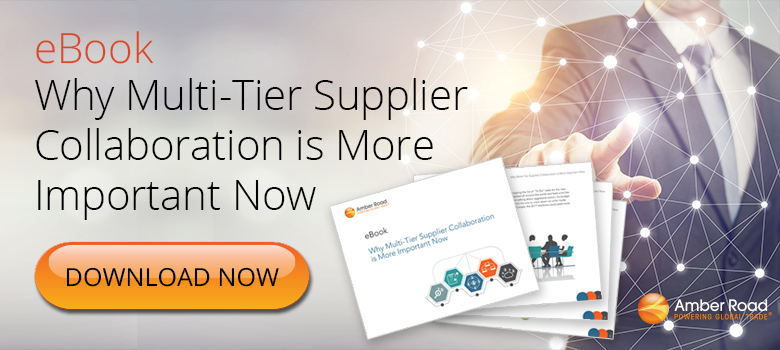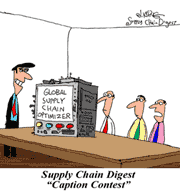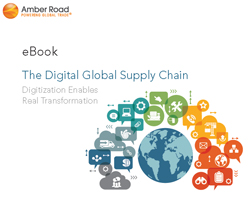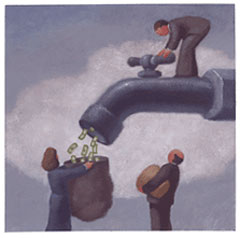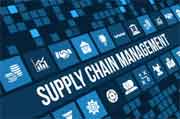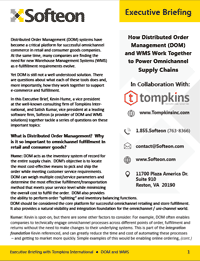Trip Report - CSCMP 2017 Part 3 Best of the Breakouts
Milking the CSCMP 2017 annual conference (now called CSCMP Edge) in Atlanta three week ago for all I can get, I am back with a final report, on the best breakout sessions I saw. That comes after starting my coverage first covering main stage and keynote presentations in part 1 (see Trip Report - CSCMP 2017), and then some more main stage action and then reporting on a very promising last day "megasession" on "Discovering Hidden Profit through Advanced Supply chain Decision Making" that ultimately didn't deliver due to time management issues (see Trip Report- CSCMP 2017 P2).
Before summarizing the three best of the six breakout sessions I attended, just some context. As noted in part 1, there were just over 100 sessions by my count spread across 18 tracks this year, ranging from supply chain leadership to warehousing, up from 16 the past two years, but down from 20 in 2014, and 26 in 2013.
| GILMORE SAYS: |
The potential is so great, Schneider's Tessier said, you need to lock yourself in a room for a day and become familiar with how blockchain works.
WHAT DO YOU SAY?
Send us your
Feedback here
|
And as I similarly noted in my May trip report on the Gartner supply chain executive conference, you have to read the fine print a bit to make sure you know what you are getting.
While the vast majority of the tracks and sessions are straight up, there were two "sponsor tracks," and two "Supply Chain Exchange" tracks (I assume made available in some package deal for exhibitors in the Exchange, the conference trade show).
Nothing the matter with any of that, and some looked interesting, but there is a commercial underlay to those tracks you should just be aware of.
The first and one of the best breakouts I attended was late Monday morning, as part of the supply chain innovation award track. If you don't know, after some selection process, six finalists present their case studies over the first two days of the conference to a panel of judges Olympic style, with the winner and runner up announced on day 3. They are usually pretty good presentations.
And that was certainly the case in the session I attended, on German wireless phone giant Vodafone's impressive development – with technology partner Celonis – of a system for "X-raying" its procurement process and thus achieving great insight and improvement.
I will note that Vodafone's Israel Exposito was unable to make it to Atlanta due to some higher corporate priority, but in a nice touch he sent a video that kicked off the presentation that gave a good several minute summary of the project. It actually added a lot, and others should consider this approach when they have to drop out at the last moment.
That left Celonis co-founder Alex Rinke to carry most of the load, and the story is a good one. Vodafone wanted to better understand execution of its procurement processes. Generally in such situations, many months of time would be spent collecting and analyzing data and talking directly with procurement managers and maybe other stakeholders to gain critical insight, all likely done with the help of outside consultants.
Vodafone took a technology approach instead, sending data from its procurement system to Celonis' process analyzer. From that, Celonis was able to perform some rather incredible analysis on how the procurement process unfolds at the company.
For example, just 38% of the time did a given procurement action at Vodafone adhere to the standard process, which is like 10 steps between purchase requisition and goods receipt. What happened the other 62% of the time? The tool will tell you. For example, in some decent percent of cases, a PO had to be reissued because the original price was wrong. That accounts say for another 10% of procurement cycles (I am just making up that number).
So eventually, Vodafone could account for nearly 100% of its 1.2 million POs issued annually. The tool graphically showed all the "spaghetti loops" that represented process deviations. There is more – the tool allows root cause analysis, such as filtering any result by commodity type, vendor, buyer, region, country, etc. Often, for example, process variations are much, much higher for a given purchased item type or vendor – and remedial actions can thus be focused.
With this great insight, Vodafone has been able to reduce procurement cycle times by 20%, and reduce total procurement process costs by 11%. Though not winning the innovation award, this was very cool, and is one of the best examples of "big data" in the supply chain that I have heard.
Our Expert Insight columnist Dr. Michael Watson of OpEx Analytics, his colleague Kristen Daihes, and Paul Brown of Clearwater Paper presented on keys to building a supply chain analytics center of excellence. It was a pretty packed room, showing the level of interest in the topic.
Let me say it was quickly clear all three presenters were real experts, and the presentation covered a lot of ground I can only do partial justice to here.
Why do we need an analytics COE to begin with? The simple answer is because our supply chains have lots of problems and opportunities that existing planning and execution systems aren't addressing.
To show you the power of what is possible here, an example was given of a system to identify bad potato chips, say for brown spots. If you provide an analytics system with images of 1000 chips, and indicate whether each chip is good or bad, the system then analyzes each photo at a pixel level, and then just on its own find patterns that identify good and bad chips. Then give the system feedback on when it was right and when it was wrong, and through machine learning it will soon master the task better than a human. Wow. |
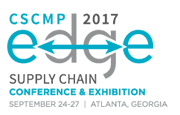
The need for a balance of "hard" (data scientists) and "soft" (communication, trust building) skills on your team was one key message. I also learned the term "research sprint," which is an accelerated effort to determine if a given analytics proposal has real merit or not in deciding on whether to move forward.
There is a real trend towards "self-service" analytics, but beware – some people may take the invalid conclusions from an "amateur" and use it to make decisions. Better to have analytics "certified" by the COE before they can be distributed one audience member suggested. This was all very good stuff.
In the last breakout track of the conference was an outstanding presentation on use of blockchain in the supply chain by Brain Tessier of industrial giant Schneider Electric. Tessier passionately believes this still sort of mysterious blockchain technology is going to have perhaps as big an impact on supply chains as the Internet.
Why? Because, he said, blockchain allows the sharing of information internally and across trading partners far easier and with much lower costs than traditional IT approaches, and this will revolutionize such integrations. I am telling you, at the end of this presentation I wanted to start investigating stock opportunities for blockchain focused companies.
In fact, Tessier believes blockchain will soon put some companies at competitive risk. If one company can easily show consumers a given product's whole geneology using blockchain and another can't, which is the consumer more likely to choose?
To be clear, this is still immature technology, there are competing standards, where it will ultimately go is unknown, etc. But the potential is so great, Tessier said, you need to lock yourself in a room for a day and become familiar with how blockchain works and its potential applications for your company.
Schneider has 5-6 blockchain pilots in process, some connected to IoT. Consider, for example, tracking handling, environmental conditions and more when Schneider customers store its products prior to installation. In its pilot, Schneider is testing whether it can ID damage that might generate an automatic RMA and new shipment to replace the damaged unit, or if a technician needs to meet the product when it is delivered to the customer's site to make repairs. Something in blockchain called a "smart contract" feature could conceivably automate the whole claims process if a 3PL caused the damage.
Schneider is also testing blockchain for produce traceability, supplier quality processes (so products that don't meet standards can be stopped before shipment) and more. This was a powerful and eye opening presentation, by far the best I have seen on blockchain.
OK, wish I had room for more. The other three presentations I saw were OK but not nearly as good as these ones.
And I promise, I am now finally done with CSCMP 2017 reporting.
Any reaction to these three breakout session summaries? What about X-raying supply chain processes? Do we need analytics COEs? And is blockchain truly revolutionary? Let us know your thoughts at the Feedback button below.
|



![]()

![]()

![]()

